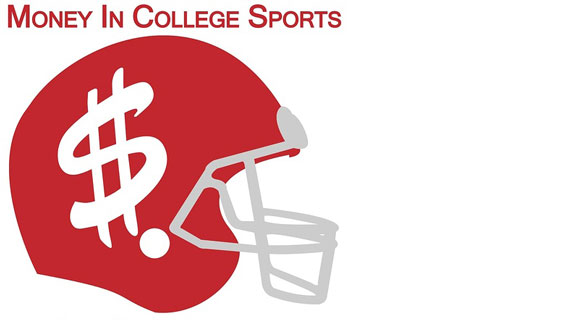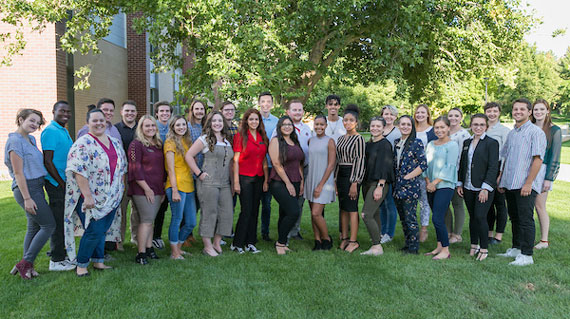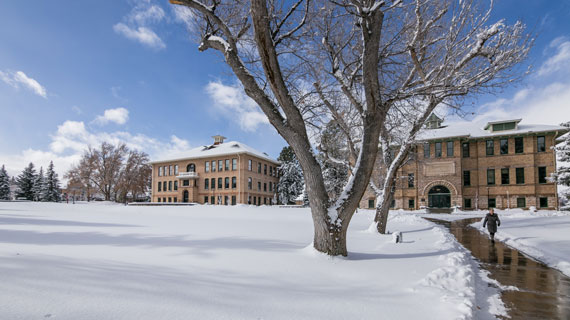Pizza and Politics- Money in College Sports
Posted: March 05, 2018 | Author: Cami Mathews | Read Time: 4 minutes
 The Michael O. Leavitt Center for Politics and Public Service hosts Pizza & Politics every Wednesday at noon to discuss a current political topic. Leavitt Center student employees research the topic and moderate the conversation. These discussions expose students to a variety of important issues and encourages them to share their own perspectives while learning all sides of an issue. Free pizza is provided for all who attend.
The Michael O. Leavitt Center for Politics and Public Service hosts Pizza & Politics every Wednesday at noon to discuss a current political topic. Leavitt Center student employees research the topic and moderate the conversation. These discussions expose students to a variety of important issues and encourages them to share their own perspectives while learning all sides of an issue. Free pizza is provided for all who attend.
With a goal to cover issues relevant to students, the Leavitt Center moderated a discussion recently on money in college sports. The discussion was moderated by Kenten Pope, a graduate student from Vernal, Utah, and Ryan Robinson, a senior political science major from Parowan, Utah.
The conversation started broad with college sports across the country, but narrowed down specifically to Southern Utah University. Many members of the audience were from SUU’s athletic department, giving the room a chance to hear from direct sources.
Basic research was presented and according to an Air.org report, the average spending per student athlete was higher than the average academic spending per student. It was also important to understand the difference between the Football Bowl Subdivision (FBS) and the Football Championship Subdivision (FCS). Larger schools, such as the University of Alabama or University of Utah, are a part of the FBS. Small schools, like Southern Utah University, are a part of the FCS. This becomes important when discussing anything related to money, such as ticket sales, sponsorships, and student fees.
What value do athletic programs add to universities?
The audience agreed that athletics programs add a sense of community to a campus. If one were to think about a basketball game, they might assume that there are different religions, races, genders, and more in the same area. But the differences are put aside and the crowd united in cheering for their team.
Others mentioned that athletic programs often increase diversity on campus. They also give students a chance to be involved outside of the classroom, increasing their connection to the school.
Thoughts on the amount of money spent on college athletics?
According to the same Air.org report mentioned above, there are key differences in the money sources of the FBS and FCS. The FBS has the following top three sources: ticket sales, donor, and distributions / television. The FCS has the following top three sources: institution, student fees, and donors.
The audience commented on the fact that FCS teams are kept afloat by students and the school, while FBS teams make their money through outside sources. This implies that FBS schools are receiving money from those willing to pay, while FCS schools receive money from everyone, regardless of participating in athletic events.
Comments were split between feelings of too much money in college sports, and the understanding that for many schools, their schools are on the map because of that spending. Many felt that FBS spending was justified, as many schools make a profit and gain publicity, while FCS schools were spending too much considering the lack of profit.
Are athletes compensated fairly?
To put this simply, it depends on a person’s understanding of compensation. Some feel that athletes should be paid for their work, hourly or salary, especially with the money and attention they bring to the school. Others feel that scholarships and essentially a free education are worth more than enough for student athletes.
Another note of concern was for the athletes who do not receive benefits from their jersey sales. Many pointed out that without that athlete and their name recognition, the jerseys would not be popular. Any profit made on a student athlete’s name, or even number, should result in that athlete receiving a portion of the income.
Should SUU make it optional to buy a student pass for athletic events?
Currently, a full-time students at SUU pays $378 in student fees per semester. $103 of that sum goes directly to athletics. Doing some simple math, SUU athletics received $667,955 from full-time students in Fall of 2017. It is estimated that SUU athletics will receive $1,355,910 for the 2017 - 2018 school year from full-time student fees alone.
The conversation on an athletic pass at SUU is a slippery slope. Many students were in favor of the idea, saying they wish they could send their $103 to other student fee areas. They felt that if they never attended an athletic event, they should not have to pay for tickets.
The opposing side made strong arguments. To start, if athletics becomes an opt-in system, all student fees would have to be checked. Imagine a first-year student receiving a checklist of areas they want to put their student fee towards. The issue becomes that many students would not give their money to smaller areas, like the tutoring center or the Leavitt Center. Second, $103 for free admission to all games is a good deal, even if one does not attend the games. The moral and community spirit that comes from athletic events boosts the campus atmosphere, affecting everyone, even if they did not attend the games.
Overall, the conversation on money in college sports was productive and beneficial for all. There was a strong showing from the SUU athletics department, allowing much of the conversation to have insights from those who work in the industry.
This article was published more than 3 years ago and might contain outdated information or broken links. As a result, its accuracy cannot be guaranteed.
Tags: Student Blog Leavitt Center




